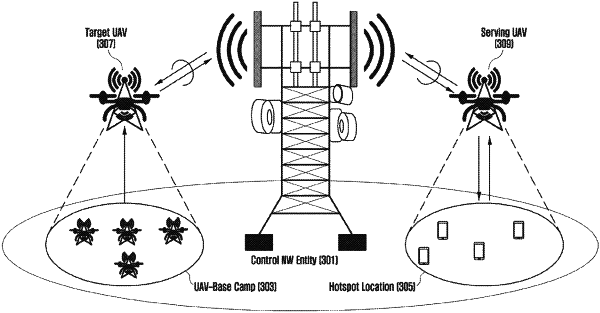| CPC G01S 13/876 (2013.01) [B64C 39/024 (2013.01); G06F 18/214 (2023.01); B64U 2101/20 (2023.01); B64U 2201/20 (2023.01)] | 14 Claims |

|
1. A method for managing a control operation by an Unmanned Aerial Vehicle (UAV), comprising;
periodically receiving a request for transmission of UAV assistance information from a network entity;
establishing a radio resource control (RRC) connection with the network entity using a unicast communication;
determining, in response to the received request, a triggering of at least one event corresponding to an initiation of a UAV control operation;
transmitting, in an RRC connected state in response to the received request, the UAV assistance information to the network entity based on the determined triggering of the at least one event;
receiving a control message from the network entity in response to the transmitted UAV assistance information, wherein the control message includes information related to an execution of the UAV control operation;
executing the UAV control operation based on the information included in the received control message;
wherein the triggering of the at least one event is determined by the UAV using a pre-trained Artificial Intelligence (AI) based learning model, and the control message further includes a fall-back probability on use of the pre-trained AI-based learning model; and
wherein based on a reliability of the UAV on the pre-trained AI-based learning model being greater than a specified threshold value, the control message further includes a control signalling message for continuing the use of the pre-trained AI-based learning model for determining the triggering of the at least one event with a higher probability, and based on the reliability of the UAV on the pre-trained AI-based learning model being than the specified threshold value, the control message further includes the control signalling message for continuing the use of the pre-trained AI-based learning model for determining the triggering of the at least one event with a lower probability.
|